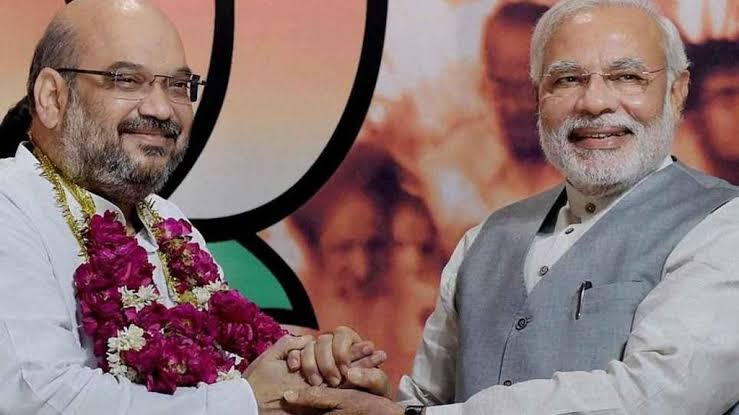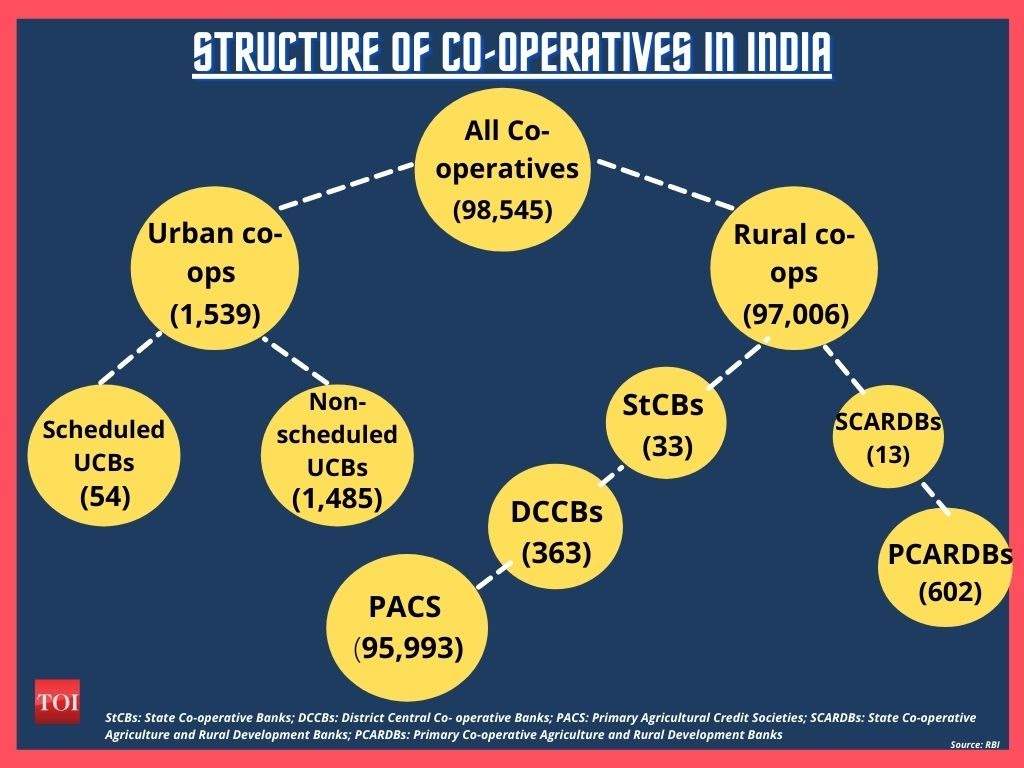
In the recent reshuffle of the Cabinet on July 7, the government announced the formation of the Union Ministry of Cooperation. Cooperative was a subject under the ambit of the Ministry of Agriculture before the reshuffle. Amit Shah will be given charge of the Cooperation Ministry along with the Home Ministry. The ministry has been created to realise the central government’s goal of Sahkaar se Samriddhi. A separate ministry for it will rejuvenate this movement in India. It will provide a legal, policy and administrative framework to boost this movement.
The cooperative movement is one of the most successful movements in Indian history, which reached the country’s grassroots. The based model on it of economic development fits perfectly in the Indian scenario. It is relevant because it provides everyone with a sense of ownership and responsibility. Since everyone owns the cooperative, everyone works to the best of their abilities.
The budget presented by the finance minister of India, Nirmala Sitharaman, highlighted the need to revive and strengthen cooperative societies. The formation of a separate ministry fulfils the budgetary goal. The centre has always believed in a community based developmental partnership model. The Ministry of Corporation will streamline the ease of doing business\’
. It will provide necessary changes in the framework to expand itself into multiple states, also known as Multi-State Cooperatives (MSCS).
What is a cooperative society?

According to International Labour Organisation (ILO), a corporative society is an autonomous association of people who voluntarily gather to achieve the aim of economic, social and cultural development. They enter into a jointly owned, democratic enterprise to run businesses.
For example, if a company has paid-up capital of rupees hundred and it has 50 members, every person contributes two rupees to the company. Since everyone’s share is equal, there is no single owner. It harnesses the power of unity and collective working. In the Indian dynamics, cooperatives usually manifest in agriculture cooperatives, daily cooperatives, sugar mills, spinning mills, consumer cooperative society, producer, the society, credit cooperative society, housing society, marketing harmonious society, et cetera.
Farmers pool their resources to process farm produce because the processed output is sold at a higher price than the raw material. India being an agricultural nation, pioneered one of the most significant cooperative movements in the history of the world. India has 1,94,195 cooperative dairy societies and 330 cooperative sugar mills. According to a report by National Dairy Development Board in 2020, the cooperatives procured around 1.80 crores litres of milk from 1.7 crore members and sold 3.7 crores litres of milk per day. Cooperative sugar mills produce 37% of the sugar.
Farmer associations form PSCS or Primary Agricultural Credit Societies to provide credit to the farmers of their areas. PSCS predicts credit needs for the area and asks the district central cooperative banks DCCB for the same. State Cooperative Banks heads the DCCB. The unity of farmers of the area inculcates into increased bargaining power. Indian farmers also encompass landless labourers who rent farmland for agriculture. Commercial banks do not grant loans unless they are provided with substantial collateral.
The absence of institutional credit leaves no option for the landless farmers but to approach the traditional money lenders or sahukar. The traditional moneylender charges a higher rate of interest and sometimes cheats the farmer resulting in slavery. Slavery as of now is abolished by the Indian constitution. Apart from the agricultural cooperatives, banking and finance cooperative institutions provide their services in rural and urban areas.
What are the constitutional provisions related to it?

Agriculture and cooperation are part of the concurrent list which means that both central and state governments can pass laws on this. According to the federal structure of the Constitution, if a conflict between central and state law arises, the law of the Centre prevails. The 97th amendment act of the Constitution added part IXB, which talks about the working of cooperatives in India.
The word cooperatives were added after unions and associations in article 19(1)(c) under part three of the Constitution. This enables every Indian citizen to form a cooperative and makes it a fundamental right of the citizens. Article 43B was added in the Directive Principles of State Policy is DPSP, part four of the Constitution, to promote these societies.
What is the significance of a cooperatives in India?
The cooperative Society provides institutional credit to the agriculture sector. State and private sector banks have not been able to provide the sector with funds. By pooling resources, a group of farmers or businessmen can buy infrastructure which they cannot afford alone. It offers strategic input for the agriculture sector by overcoming constraints and creates a conducive atmosphere for development. It also provides cheap credit to cottage industries and small enterprises.
Collective ownership and responsibilities minimise class conflict and other social ills. Examples of flourishing Indian co-ops that have changed the lives of people are Shri Mahila Griha Udyog Lijjat Papad and AMUL Anand Milk Union Ltd. Lijjat Papad started by a group of seven women in Bombay in 1959 with ₹80. In 2021 it has a turnover of Rs.1600 crores and employs more than 45,000 women. The group‘s main aim is to empower women by providing them economic independence.
Anand milk union Ltd is a dairy cooperative in Anand village of Gujarat. It was started in 1946 under the leadership of Sardar Vallabhbhai Patel and Tribhuvandas K Patel. Amul helped India achieve its aim of the white revolutionand is the worlds largest producer of milk and dairy products. Amul was formed to retaliate against the exploitation of the milkmen by the middlemen in the cities. All milk farmers came together, formed a co-op and started supplying milk directly to the Bombay Milk Scheme.
Is there a need for a separate ministry for cooperatives?
Yes, because only Maharashtra, Gujarat and Karnataka have a successful cooperative structure that helped people. A separate ministry is essential because agriculture demands a lot of attention and time. The separate Ministry’s sole focus would be on expanding movement in India.
The ministry would procure necessary financial and legal power to reach every nook and corner of India. In the present system, co-op institutions get their equity from the Centre, and state governments act as guarantors to these institutions. This formula was successfully applicable only in few states like Maharashtra, Gujarat and Karnataka. Vaikunth Mehta Institute of Cooperative Management has conducted researches where they found out weaknesses in the this sector.
The study pointed out poor implementation and lack of funds in certain states. Apart from this, the sector has always suffered because of the inadequate training of officers. People are ill-informed about the objectives, movements, rules and benefits of forming cooperative societies. These societies are marred by monetary influence as the wealthy farmers become chairman of the organisations. They run the organisation on their whims and wishes. They need a revolution in management tactics because huge membership hinders working.
Why is Amit Shah chosen as the leader of the Ministry of Cooperation?

These institutions have given India multiple leaders; some of them left their footprints on the national level. Maharashtra legislature has around 150 legislators who trace their roots to these institutions. NCP chief Sharad Pawar and Deputy Chief Minister Ajit Pawar started their political journey from co-op elections. Amit Shah was head of the Ahmedabad District Central Cooperative Bank, Gujarat, for a long time. Shah knows his work in and out because he was once part of the machinery.




